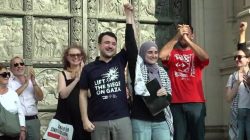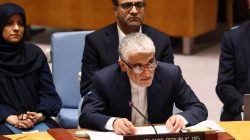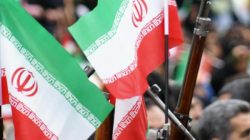On May 31, Pakistan reported that following the dissolution of the Soviet Union in 1991, the Russian economy suffered significantly, leading many state-supported scientific organizations to close down. This affected pioneering efforts across various domains such as aerospace, healthcare, medical science, and sophisticated technology sectors. Financial constraints brought these initiatives to an abrupt halt, leaving numerous highly skilled researchers—who were once central figures in driving innovation within the USSR—without employment. Consequently, these experts gained international appeal, attracting attention from countries looking to enhance their research capabilities and technological advancements.
Israel seized this chance by actively attracting Russian Jewish immigrants, bringing in numerous engineers, scientists, doctors, and academics. According to certain assessments, close to 70,000 skilled individuals moved to Israel in the early ’90s. This influx had a profound impact; these newcomers revitalized various sectors within Israel’s economy, driving annual GDP growth rates as high as 10 percent throughout the decade. They formed the core of Israel’s research and development community, elevating the nation to become one of the leading centers for technological advancement globally. Recognizing this wealth of talent, major international companies such as Samsung, Hyundai, and Daewoo started delegating their R&D work to Israeli firms, acknowledging the significant contribution made possible by the migration wave originating from the former Soviet Union.
Israel’s advancements extended beyond just technology; they also excelled in areas such as defense, space exploration, and medical studies. Russian experts helped establish a comprehensive R&D environment that has maintained Israel’s competitive advantage in sectors like defense technology, aerospace engineering, and development-driven economic expansion.
Today, we see a comparable migration happening in the United States. Rather than drawing lessons from Russia’s downfall and safeguarding intellectual resources, the Trump administration, steered by two of America’s boldest but contentious leaders—Elon Musk and Vivek Ramaswamy—is implementing the DOGE project (Decentralization of Government Education). Under this initiative’s cover of reform, there is an assault on U.S. colleges and academic establishments. Research endeavors deemed too complex or incomprehensible due to their “odd titles” face ridicule; funding for basic sciences has been slashed, fostering the misleading belief that such studies are futile wastes of money.
Consequently, premier institutions of higher education—which were once beacons attracting international talent and catalysts for innovation—are facing constraints. Government financing is diminishing, research initiatives are getting scrapped, and prominent researchers are losing their jobs at an alarming rate. Without backing, these scientists are now exploring prospects abroad.
Nations such as China, France, Saudi Arabia, the UAE, and Turkey recognize the importance of intellectual capital and are actively attracting talented American professionals who have been pushed out from their original positions. These countries provide attractive compensation packages, state-of-the-art laboratories, and the opportunity for pioneering scientific exploration. Among them, China is particularly aggressive in hiring leading researchers from the United States with the aim of speeding up its technological and defense advancements. While the US tightens restrictions, China is harnessing these brilliant individuals to develop premier research and development facilities—one capable of competing with, or potentially exceeding, those historically held by the US.
This perilous development continues despite efforts from Trump’s administration to rescind student visas for Chinese students, complicating their ability to pursue education in the United States. Yet, as Chinese students strive to remain in America, unemployed American professors, researchers, and scientists are moving to China—establishing an inverse flow of expertise.
It represents a dual setback for America’s future. Firstly, by terminating student visa programs, the United States is shutting out international talent that was crucial for driving innovation. Secondly, by reducing university budgets, it compels domestic talent to look elsewhere, including nations such as China, for opportunities. Rather than being an educator to the globe, the country now faces the prospect of losing its intellectual capital abroad.
This mass departure echoes Marco Rubio’s severe alerts. Rubio has consistently warned that the United States is significantly falling short of China in both military and economic competition, which might result in serious confrontations. He emphasizes China’s unparalleled wartime-scale military expansion—the quickest ever recorded—and criticizes U.S. policies for permitting China to take control of manufacturing sectors, crucial supply lines, and intellectual domains. According to Rubio, despite the U.S.’s annual defense expenditure surpassing $900 billion as opposed to China’s officially declared figure of around $314 billion (with estimations indicating Chinese real spending may exceed $470 billion), China’s strategic investments, particularly in areas like hypersonic weapons, cyberspace operations, outer space technologies, and artificial intelligence, provide them with an overwhelming advantage.
Rubio mourns the effects of deindustrialization—the consequence of American firms shifting their manufacturing operations abroad in pursuit of lower labor costs and reduced regulation—which has eroded the nation’s industrial foundation. From 1998 to 2021, more than 5 million manufacturing positions were eliminated along with around 70,000 factories in the United States. Despite initiating efforts to bring those sectors back home today, restoring the country’s manufacturing prowess might require as much as twenty years—by then, global developments would likely continue, leaving America still striving to close the gap.
In the meantime, Trump’s Golden Dome initiative, inspired by Israel’s Iron Dome, is being promoted as a response to external dangers. This extensive missile defense program aims to shield against various types of projectiles including ballistic, hypersonic, and cruise missiles. The projected expenses range from approximately $175 billion to $500 billion—a staggering amount during a time when funding for basic scientific research is diminishing. Detractors contend that this endeavor represents merely a temporary fix incapable of offsetting the gradual erosion of American expertise in sciences, manufacturing, and technology.
The truth is stark: America is grappling with a multifaceted crisis in areas such as science, manufacturing, education, and defense. The United States is no longer attracting the globe’s top talent; instead, it is pushing these individuals away. As countries like China, France, the Middle East, and more attract this intellectual capital, they aren’t just securing an advantage—they’re altering the worldwide distribution of power.
In order to stop this downturn from turning into an irreversible trend, the United States requires thorough, targeted overhauls. This includes rebuilding its manufacturing sector, reinvesting in higher education and scientific research, reinstating support for foundational and practical sciences, and attracting international talent rather than repelling it. Lacking such a holistic approach, the US faces the prospect of relinquishing its status as the globe’s preeminent superpower—a role that currently seems more precarious and doubtful with each passing day.
Ultimately, this isn’t merely about outdoing China or Russia. It hinges on whether the United States possesses the foresight, guidance, and modesty to draw lessons from both others’ errors and its own history, then craft a tomorrow capable of enduring through the ages.







